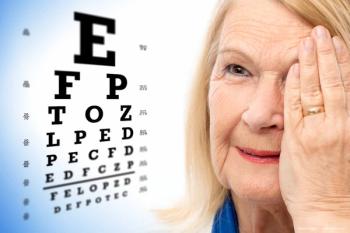
New research illuminates patient dissatisfaction despite successful restoration of vision following cataract surgery
Italian investigators reported that ocular surface conditions such as dry eye disease are key factors in perioperative outcomes, even when patients achieve 20/20 vision
Italian investigators, led by coauthors Chiara De Gregorio, MD, and Sebastiano Nunziata, MD, reported that ocular surface system failure (OSSF) is responsible for the dissatisfaction expressed by patients after successful cataract surgery, despite 20/20 vision.1 Drs De Gregorio and Nunziata are from the Ophthalmology Complex Operative Unit, Ophthalmology Campus Bio-Medico University, and Ophthalmology Operative Complex Unit, Campus Bio-Medico University Hospital Foundation, both in Rome, Italy.
The team of researchers explained that these patients measure the success of cataract surgery by both the restoration of visual acuity and subjective improvements in vision quality and overall satisfaction.
Therefore, ophthalmologists now are challenged to address a broader spectrum of needs, including contrast sensitivity, glare and optical aberrations. “Achieving optimal outcomes relies on precise IOL power calculations and alignment, as well as the comprehensive management of ocular surface health, which is increasingly recognised as a key determinant of postoperative success,” they commented.
They went on to explained that ocular surface disease (OSD), particularly dry eye disease (DED), is a key factor in the perioperative outcomes, with more than 80% of patients having some degree of DED postoperatively; 20% of patients have preexisting DED and 60% remain undiagnosed before the surgery. “Despite achieving an excellent uncorrected or best-corrected visual acuity (UCVA, BCVA) of 20/20, up to 35% of patients report dissatisfaction due to OSSF triggered by surgical trauma,” the investigators reported.2
These patients can experience glare, halos, contrast sensitivity issues or ocular discomfort, ie, a failure of the ocular surface system that does not meet the diagnostic criteria for dry eye.
Focus of the study
The investigators set out to characterise the OSSF and explore way to improve perioperative management by conducting an open observational study that included 20 patients with stage N2–3 and C1–2 lens opacities. They preoperatively and postoperatively assessed the ocular surface disease index (OSDI), Standard Patient Evaluation of Eye Dryness (SANDE) score, Schirmer test, the tear break-up time (TBUT) and fluorescein staining. The patients were followed at 1 week and 1 and 3 months postoperatively.
The authors reported, “Despite achieving a BCVA of 20/20, 44% of patients reported OSSF symptoms. Postoperative evaluations revealed significant worsening of the OSDI and SANDE scores (P < 0.001), Schirmer test (preoperative mean 19.92 ± 10.06; P < 0.001), and TBUT (preoperative mean 5.88 ± 2.64 seconds; P < 0.001). The meibomian gland dysfunction [MGD] and conjunctival hyperemia also worsened.”
The investigators emphasised the importance of addressing the MGD before the cataract surgery. Interventions can include regular use of warm compressors, lid hygiene, treatment of demodex and administration of systemic tetracycline antibiotics and topical azithromycin.3,4 If the inflammation does not subside, they advised a short-term regimen of preservative-free low-level steroids, which have been reported to have consistently produced encouraging outcomes and may be proposed as a adjunctive therapy for highly moderate to severe cases.5 This regimen can be continued postoperatively.
They also advised careful assessment of the postoperative eyedrop regimen because preserved drops might lead to toxicity and exacerbations of OSD.6 “When possible, the most epithelio-toxic antibiotics should be avoided, or used with caution and/or for a short duration. More frequent follow-up is usually required to ensure ocular surface compatibility and to determine if a change in treatment is necessary.7 If ocular surface inflammation is severely worsened, some patients may require more aggressive treatment, including short-term topical (unpreserved) steroid therapy, or even topical immunomodulatory drugs,” they cautioned.8
The type of surgery should also be considered. While the patients in the current study all underwent a standard phaco procedure, future studies should evaluate the effects of femtosecond laser-assisted cataract surgery or micro-incision cataract surgery on the ocular surface parameters.
“Such findings would inform tailored surgical planning and perioperative management strategies, ultimately improving both objective outcomes and patient satisfaction. In addition to the factors assessed in this study, other potential risk factors for postoperative dry eye warrant consideration. Smoking, diabetes mellitus, high scores on the Hospital Anxiety and Depression Scale, and longer surgical incision length have all been identified as contributors to postoperative ocular surface dysfunction,” they said.
The bottom line, the investigators believe, is that comprehensive strategies can mitigate symptoms and enhance the benefits of cataract surgery.
References
- De Gregorio C, Nunziata S, Spelta S, et al. Unhappy 20/20: a new challenge for cataract surgery. J Clin Med.2025;14:1408;
https://doi.org/10.3390/jcm14051408 - Trattler,WB, Majmudar PA, Donnenfeld ED, et al. The Prospective Health Assessment of Cataract Patients’ Ocular Surface (PHACO) study: The effect of dry eye.Clin Ophthalmol.2017;11, 1423–1430.
- Baudouin C. Revisiting meibomian gland dysfunction.J Français Ophtalmol.2014;37: 757–762.
- Song P, Sun Z, Ren S, et al. Preoperative management of MGD alleviates the aggravation of MGD and dry eye induced by cataract surgery: a prospective, randomized clinical trial.Biomed Res Int.2019;2019:2737968.
- Avunduk AM, Avunduk MC, Varnell ED, Kaufman HE. The comparison of efficacies of topical corticosteroids and nonsteroidal anti-inflammatory drops on dry eye patients: A clinical and immunocytochemical study. Am J Ophthalmol.2003;136:593–602.
- Sánchez MA, Arriola-Villalobos P, Torralbo-Jiménez P, et al. The effect of preservative-free HP-Guar on dry eye after phacoemulsification: A flow cytometric study.Eye. 2010;24:1331–1337.
- Kato K, Miyake K, Hirano K, Kondo M. Management of postoperative inflammation and dry eye after cataract surgery.Cornea. 2019;38(Suppl S1), S25–S33.
- Starr CE, Gupta PK, Farid M, et al. An algorithm for the preoperative diagnosis and treatment of ocular surface disorders.J Cataract Refract Surg.2019;45:669–684.
Newsletter
Get the essential updates shaping the future of pharma manufacturing and compliance—subscribe today to Pharmaceutical Technology and never miss a breakthrough.













































